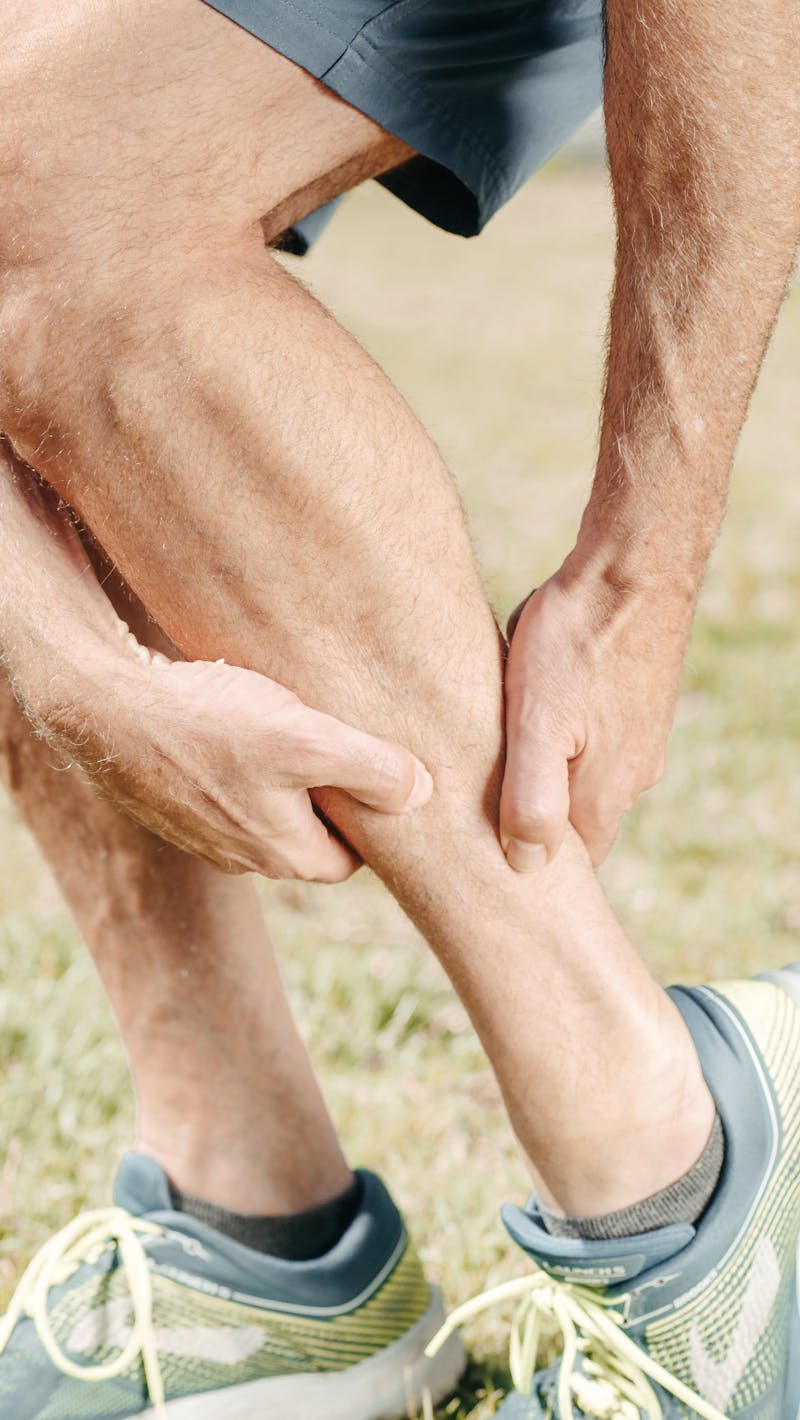Running with Sciatica
When running with sciatica, every foot strike sends shockwaves through your body, creating compression forces in your spine and on surrounding nerves.
Each stride tilts your spine and pelvis, so if your sciatic nerve is inflamed or pinched, you can feel it down your leg.
Severe sciatica pain can limit mobility by reducing the range of motion in your legs, restricting your normal stride length, and causing compensatory movements that alter your natural running mechanics.
The good news is that you can safely return to your regular training routine with physiotherapy, targeted core strengthening, and adjustments to your running form.
Your recovery journey might involve temporary setbacks, with good days and more challenging ones as you rebuild your running capacity, however, a systematic approach will prevent reinjury and allow proper healing.

Symptoms of sciatica when running
- You feel a sharp, burning pain from your lower back down through your buttocks and into the back of your leg.
- Your running stride is uneven or shorter on the affected side as your body tries to protect itself, often leading to a noticeable limp or altered running pattern.
- You feel numbness, tingling, or a pins and needles sensation down your leg, which worsens as you run.
- Your affected leg feels weaker than usual during your run, making it harder to maintain proper form and potentially causing you to drag or catch your foot.
- The pain typically intensifies during your run, especially when going uphill or running on uneven surfaces, and doesn't "warm up" or improve as you continue running.
Should you run with sciatica?
Whether to run with sciatica depends on your pain levels and nerve irritation.
A sharp or burning pain that persists while running or walking means your body isn't ready for regular activities. Mild discomfort without worsening during motion might be tolerable on short, gentle runs.
But if your running form changes to avoid pain or symptoms increase after running, stop and see a physiotherapist first. Your nerve needs time to settle.
How do you get your sciatic nerve to stop hurting?
There's no quick fix for sciatic nerve pain, but you can manage and gradually reduce symptoms. Try these approaches:
- Find seated and standing positions that take pressure off the nerve (like side-lying with a pillow between your knees).
- Maintain gentle movement through walking.
- Apply ice or heat to your lower back for temporary relief.
- Do simple exercises prescribed or recommended by a physiotherapist – YouTube is a decent place to find self-help stretches.
Similar injuries
Some injuries that can feel like sciatica are:
Piriformis syndrome
Your piriformis muscle in the buttock can compress your sciatic nerve, causing pain patterns similar to sciatica but more so in the hip region.
Hamstring tendinopathy
Pain occurs where the hamstrings attach to the sitting bone, causing deep buttock pain. Unlike sciatica, it often improves during running but worsens afterwards.
SI joint dysfunction
Sacroiliac joint problems can cause pain radiating from the lower back into the buttocks and leg. They are usually more localised than sciatica but can mimic its symptoms during running.
Lumbar strain
A muscle strain in the lumbar region can cause pain that travels to the buttock and leg. Unlike sciatica, however, this pain is usually duller and improves with gentle movement.
Causes of Sciatica
The sciatic nerve affects your running when pressure, inflammation, or irritation along its pathway disrupts normal movement patterns.
There are several ways this can happen:
Running mechanics
Poor running form creates uneven pressure on your spine with each stride. Overstriding, excessive heel striking, or running with tilted hips can compress nerve roots and trigger sciatic pain. Extended running with improper mechanics worsens the condition.
Related condition: Runner's Knee
Training overload
Rapidly increasing mileage or intensity without proper adaptation over time stresses your lower back and surrounding structures. This overload can inflame nerve pathways and compress spinal discs, especially during high-impact running.
Weak core muscles
Insufficient core strength fails to protect your spine during the impact of running. When core muscles fatigue, your lower back absorbs more shock, potentially irritating the sciatic nerve and surrounding tissues during longer runs.
Muscle imbalances
Tight hamstrings, weak glutes, or uneven hip flexibility can pull your pelvis out of alignment while running. This creates compensatory movements that may compress or irritate the sciatic nerve over time.
Terrain challenges
Running consistently on hard surfaces, steep hills, or uneven ground increases impact forces on your spine. These challenging terrains can exacerbate nerve compression and create new pressure points along the sciatic pathway.
Cross-training gaps
Neglecting strength training and flexibility exercises leaves runners vulnerable to sciatic issues. Focusing solely on running without complementary exercises can create muscle imbalances contributing to nerve compression.
Incorrect footwear
Running in worn-out or inappropriate shoes alters your gait and impact absorption. Poor shoe choice can lead to compensation patterns that stress your lower back and sciatic nerve, leading to tell-tale tingling.
Physiotherapy for runner's sciatica
Initial assessment
Your pain levels and mobility are core considerations during your initial assessment to understand how the condition affects you.
We might evaluate your running mechanics, spine mobility, and nerves to understand how running affects the sciatic nerve.
An initial assessment helps identify whether the issue is caused by spinal compression, muscle imbalances, or problems with running form.
Pain management phase
Finding comfortable positions that relieve pressure is the priority — it's amazing how much relief you can get from simply learning how to position yourself correctly.
When you come for treatment, we'll combine gentle hands-on therapy with exercises to help calm down the nerve pain.
Don't underestimate the power of heat. A heat pack can be your best friend, helping your tight muscles relax while boosting blood flow to speed up healing.
Manual therapy
These hands-on techniques targeting the affected areas are beneficial in reducing inflammation and stimulating healing:
- Trigger point release
- Massage of tight muscles around your spine and buttocks
They can reduce pressure on the sciatic nerve and improve tissue mobility, returning some normality to your movements.
Movement re-education
Correcting movement patterns that cause sciatica with core stability training, posture correction, and running gait analysis is crucial to reducing the chances of injury recurrence.
Exercises that strengthen weak muscles and stretch tight ones will help protect your spine while running to keep sciatica at bay.
Gradual return to running
The best way to return to running is to build confidence through walking and mix in short running intervals when your body is ready.
As your comfort grows, running time increases until you return to continuous runs. A physio can help refine your running technique and show you protective warm-up routines.
Remember, this is about progressing at your own pace without rushing or risking a setback.
Prevention strategies
You'll learn exercises for long-term spine health, and your physiotherapist will advise on running surface choices, appropriate footwear, and training load management to keep your sciatica in check and promote complete recovery.
Summing up
You might be tempted to push through sciatic pain and keep running in the hope that something clicks back into place, but it could be detrimental to you for months instead of weeks.
Listen to your body when it signals something's wrong. Instead of pushing through the pain, take time to heal correctly. Working with a physiotherapist and following a structured return-to-running plan will get you back to the sport you love.


